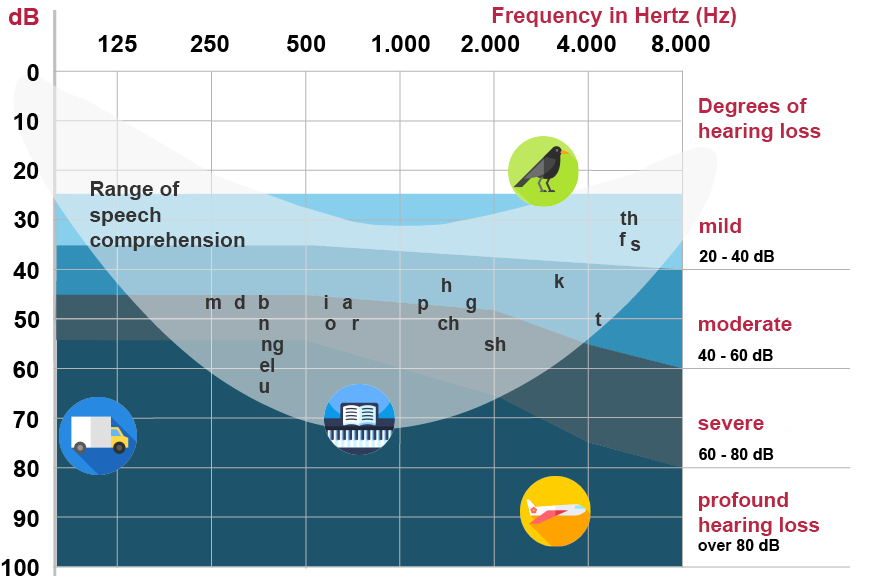
Identifying hearing problems
The first step is a hearing test

Hearing loss is a reduction in hearing ability. It may be of genetic origin, or it may occur due to illness, noise exposure or age. It can range from minor inconvenience to complete hearing loss. Hearing problems should be addressed early so that they do not become a burden and do not reduce the quality of life. A hearing test at an audiologist can be a first step. We offer you the opportunity to do this at our Oberlin Hörpunkt.
When should I have a hearing test?
People with hearing loss have reduced or no auditory perception of high pitched and low pitched sounds. It is not easy to recognise first signs of hearing problems by oneself. They do not appear suddenly, but develop gradually, and many people notice the deterioration only when it has reached an advanced stage.
You should have your hearing tested:
- if you find it difficult to follow conversations,
- if you have difficulties in understanding people in noisy situations or with background noise such as radio music,
- if you have the impression that the person you are talking to speaks too softly or mumbles,
- if you often have to ask others to repeat what they say,
- if you often turn up the volume of your television set and others find this too loud.
What is an audiogram?
The results of a hearing test can be displayed on an audiogram. An audiogram maps a person's individual hearing range and shows what is called his or her auditory threshold. The threshold indicates how weak a sound can become before it is no longer audible. It is between 0 and 20 decibels (dB) for a well hearing person. In the case of mild hearing loss, people can only hear sounds with a sound intensity above 20 dB, so that birdsong, for example, is no longer acoustically perceptible for them.

How do I read an audiogram?
- People can only hear sound within a certain range of frequency and sound pressure level
- Frequency is the pitch of sound and is measured in Hertz (Hz)
- Sound pressure level is the strength or intensity of the sound and is measured in decibels (dB)
- Hz-axis: the further you follow it from left to right, the higher the sound becomes
- dB axis: the further you follow it from top to bottom, the louder the sound is
- The so-called speech banana shows the volume and frequency range in which spoken language occurs








